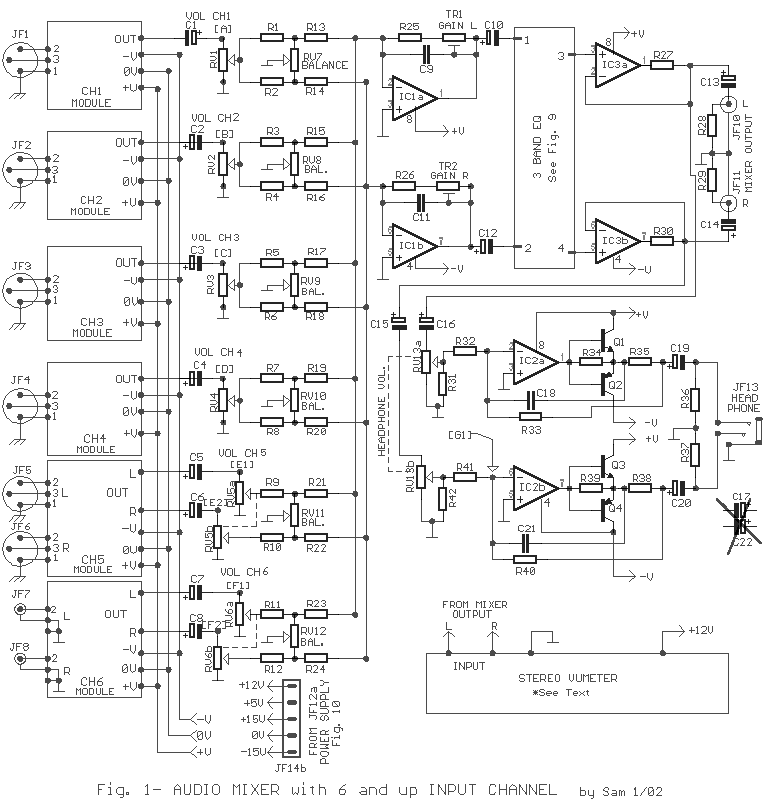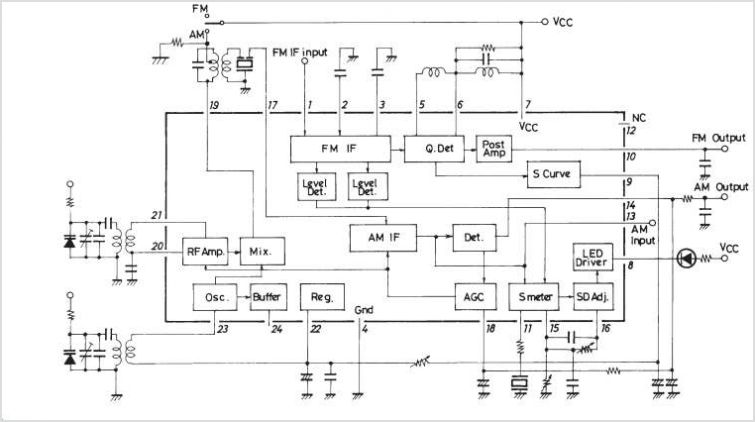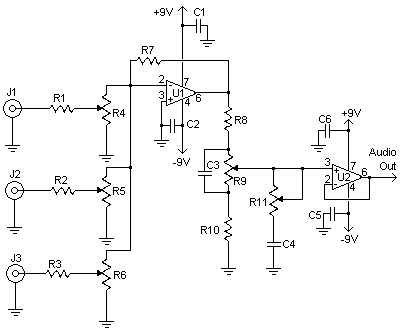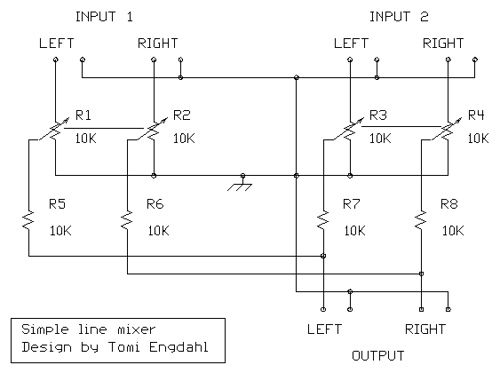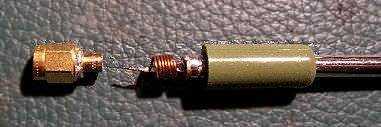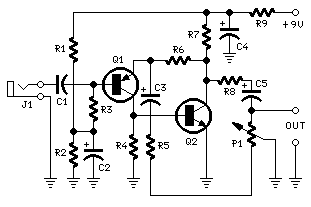
Portable Mixer
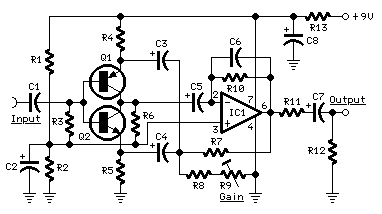
The target of this project was the design of a small portable mixer supplied by a 9V PP3 battery, keeping high quality performance. The mixer is formed assembling three main modules that can be varied in number and/or disposition to suit everyone needs.
The portable mixer design consists of three primary functional modules: the input stage, the mixing stage, and the output stage. Each module can be independently configured or expanded based on user requirements, allowing for flexibility in the design.
1. **Input Stage**: This module typically includes several channels for audio input, which can accommodate various sources such as microphones, instruments, or line-level signals. Each channel may feature a preamplifier circuit to boost the input signal to a usable level. The preamplifier can be based on operational amplifier (op-amp) configurations to ensure low noise and high fidelity. Additionally, each channel can be equipped with individual gain controls to allow the user to adjust the volume levels for different audio sources.
2. **Mixing Stage**: The core of the mixer is the mixing stage, where the audio signals from the input stage are combined. This stage may utilize a summing amplifier configuration to mix the signals effectively. The design can include features such as equalization controls (bass, mid, treble) to enhance the audio quality further. A pan control might also be integrated to allow users to adjust the stereo positioning of each audio channel. The mixing stage can be powered by the same 9V battery, ensuring portability without sacrificing performance.
3. **Output Stage**: The output stage is responsible for driving the mixed audio signal to the output device, such as speakers or headphones. This module may include a final amplifier circuit to ensure that the output signal is sufficiently strong for the intended use. A low-pass filter could be included to eliminate any high-frequency noise that may have been introduced during the mixing process. Additionally, output level controls may be implemented to allow users to adjust the final output volume.
The entire mixer can be housed in a compact enclosure, designed for portability, with clearly labeled controls for ease of use. Battery power management should be considered to maximize the operational time of the device, possibly including a power indicator LED to inform users of battery status. Overall, this portable mixer aims to deliver high-quality audio performance while being adaptable to various user needs and scenarios.The target of this project was the design of a small portable mixer supplied by a 9V PP3 battery, keeping high quality performance. The mixer is formed assembling three main modules that can be varied in number and/or disposition to suit everyone needs.
🔗 External reference
The portable mixer design consists of three primary functional modules: the input stage, the mixing stage, and the output stage. Each module can be independently configured or expanded based on user requirements, allowing for flexibility in the design.
1. **Input Stage**: This module typically includes several channels for audio input, which can accommodate various sources such as microphones, instruments, or line-level signals. Each channel may feature a preamplifier circuit to boost the input signal to a usable level. The preamplifier can be based on operational amplifier (op-amp) configurations to ensure low noise and high fidelity. Additionally, each channel can be equipped with individual gain controls to allow the user to adjust the volume levels for different audio sources.
2. **Mixing Stage**: The core of the mixer is the mixing stage, where the audio signals from the input stage are combined. This stage may utilize a summing amplifier configuration to mix the signals effectively. The design can include features such as equalization controls (bass, mid, treble) to enhance the audio quality further. A pan control might also be integrated to allow users to adjust the stereo positioning of each audio channel. The mixing stage can be powered by the same 9V battery, ensuring portability without sacrificing performance.
3. **Output Stage**: The output stage is responsible for driving the mixed audio signal to the output device, such as speakers or headphones. This module may include a final amplifier circuit to ensure that the output signal is sufficiently strong for the intended use. A low-pass filter could be included to eliminate any high-frequency noise that may have been introduced during the mixing process. Additionally, output level controls may be implemented to allow users to adjust the final output volume.
The entire mixer can be housed in a compact enclosure, designed for portability, with clearly labeled controls for ease of use. Battery power management should be considered to maximize the operational time of the device, possibly including a power indicator LED to inform users of battery status. Overall, this portable mixer aims to deliver high-quality audio performance while being adaptable to various user needs and scenarios.The target of this project was the design of a small portable mixer supplied by a 9V PP3 battery, keeping high quality performance. The mixer is formed assembling three main modules that can be varied in number and/or disposition to suit everyone needs.
🔗 External reference
